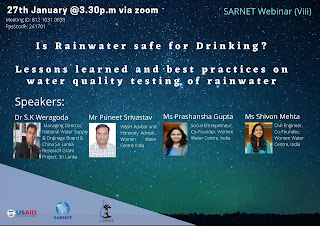Community governed rainwater harvesting systems of Mizoram is another unique feature of the state
Mizoram is in the northeastern
part of India. The area is hilly and has a significant tribal population in
the state. In Mizoram, the traditional water sources are the tuikhurs: the
springs. The observations of the community were that due to deforestation,
soil erosion, and shifting cultivation practices the water retention capacity of
the soil has been reduced and many of these springs were drying up during the
summer. Reduction and variation of the rainfall was observed since 2011.These
variations can be attributed to climate change.
The village communities have
installed rooftop rainwater harvesting in storage containers with attached
taps, which are fixed on the surface through horizontal gutters from tin
sheeted roofs of the houses in community halls, schools, and government
offices. The installation of the rainwater containers was done with over 30% of
the community contributions alongside the support of the government. The
community attended to the operation and maintenance of the structures. In
addition, water quality testing kits had been also provided to the villages.
The harvested rainwater is equally shared households by community councils
These villagers suggest that the
government should actively engage in sharing the lessons of Mizoram indigenous local wisdom on rooftop rainwater
harvesting specifically on community governance with other states officials and
create a platform to exchange information and experiences of the rainwater
harvesting and community governance practices from other states in India. This
study was conducted in the villages of Muthi; Lungllengn; Sakwrtuichhun and
Seling in the Aizwal district of Mizoram.
Extended
abstract submitted to the SARNET Conference – “Looming Water Crisis and Climate
Change in South Asia; Rainwater Harvesting as an Adaptation Strategy by Dr
Vishnu Partheep Tej (A research scholar and University Grants Commission-Junior
Research Fellow at the Department of Sociology, Sri Krishnadevaraya University India)
and Dr.Polanki SivaRam,(A development researcher and a trainer, National Institute of Rural Development
and Panchayati Raj, Hyderabad, India).



Comments
Post a Comment